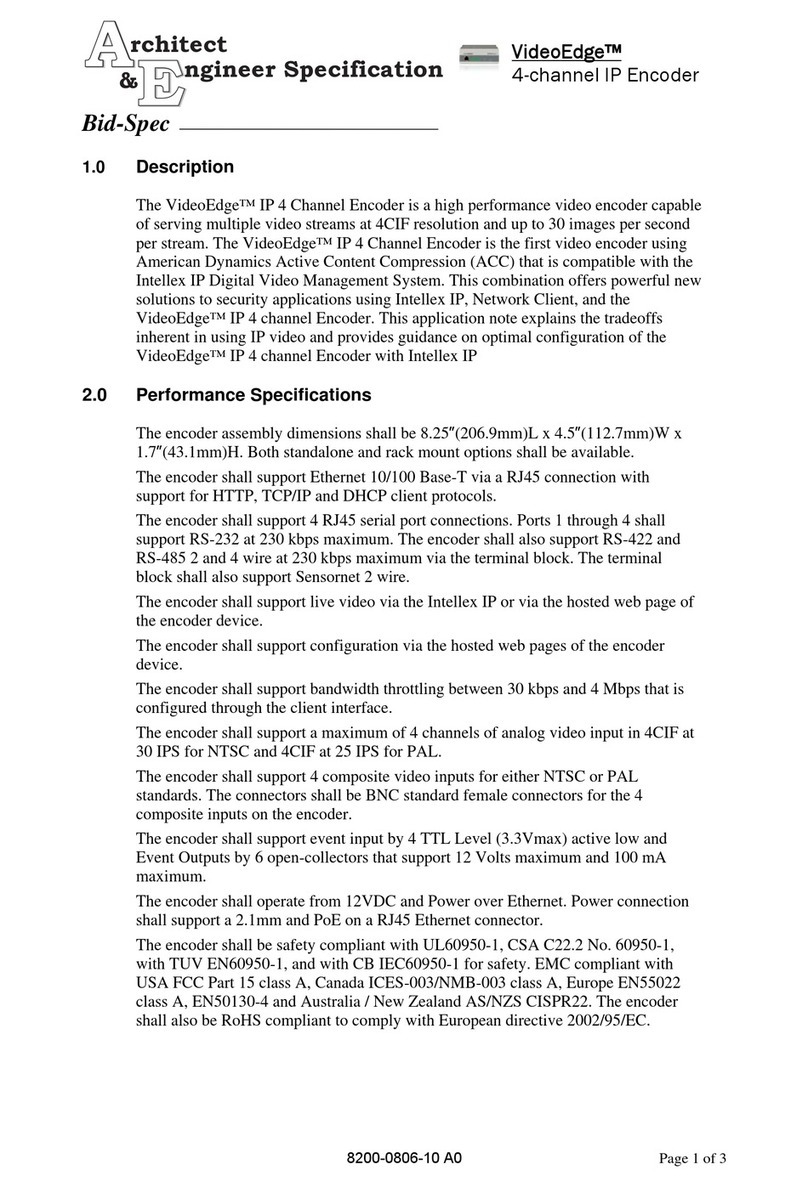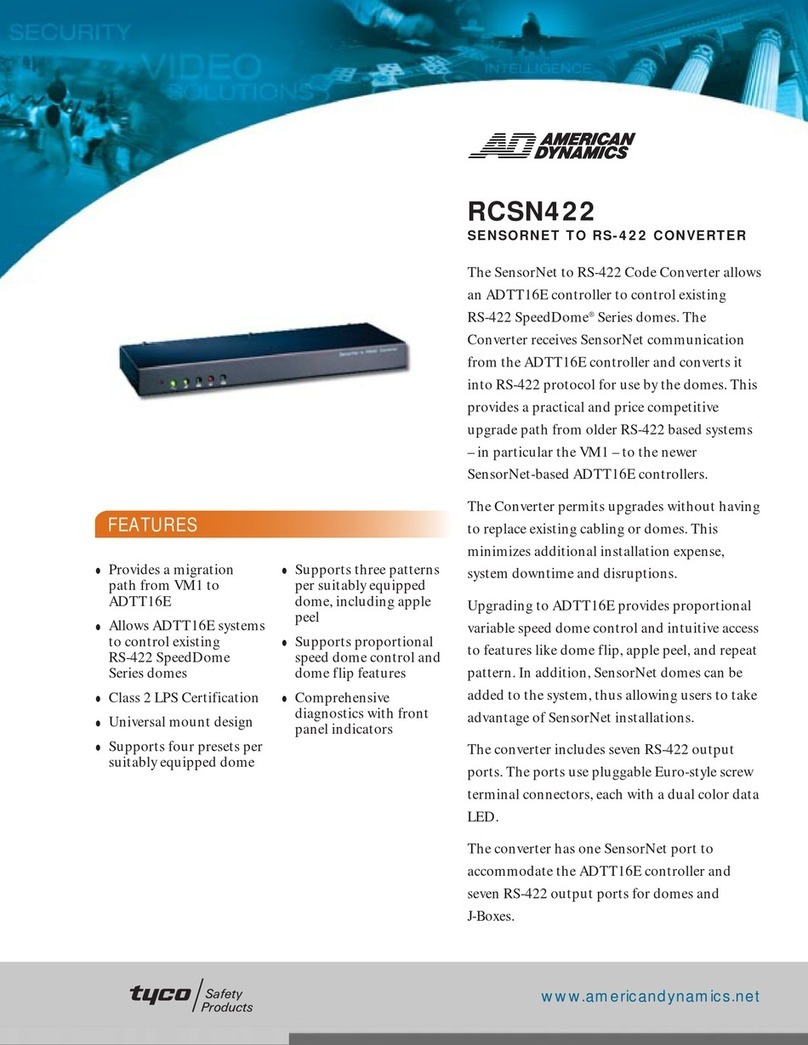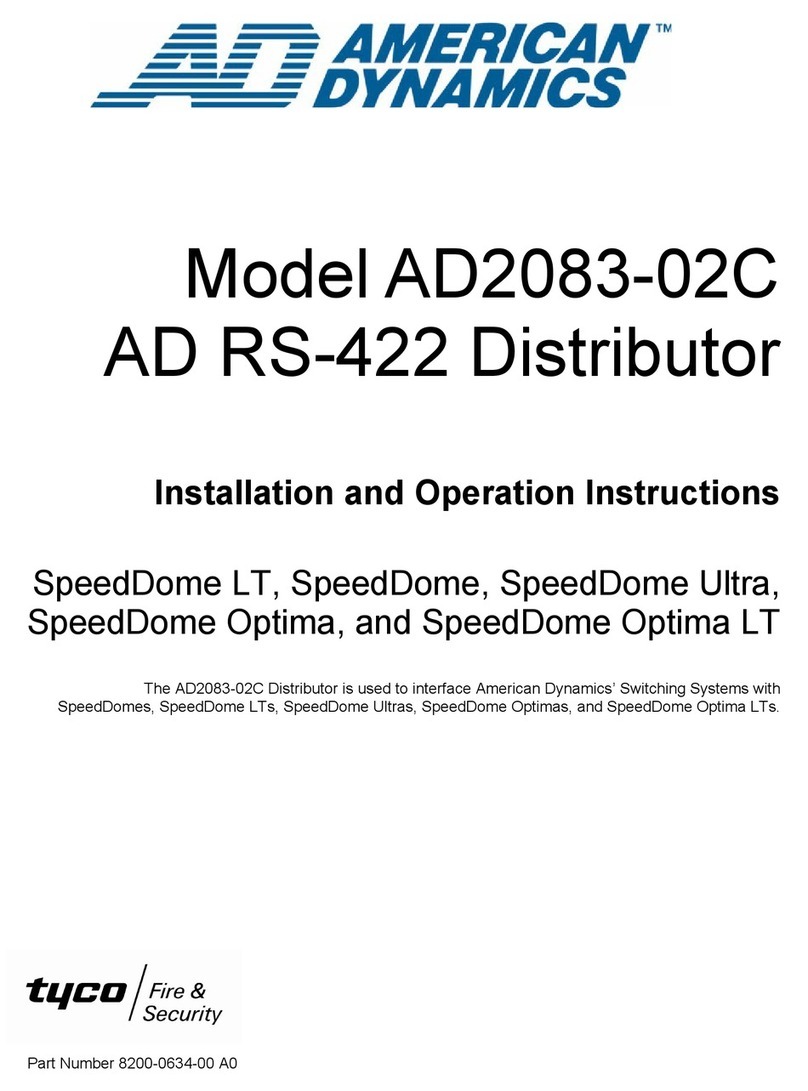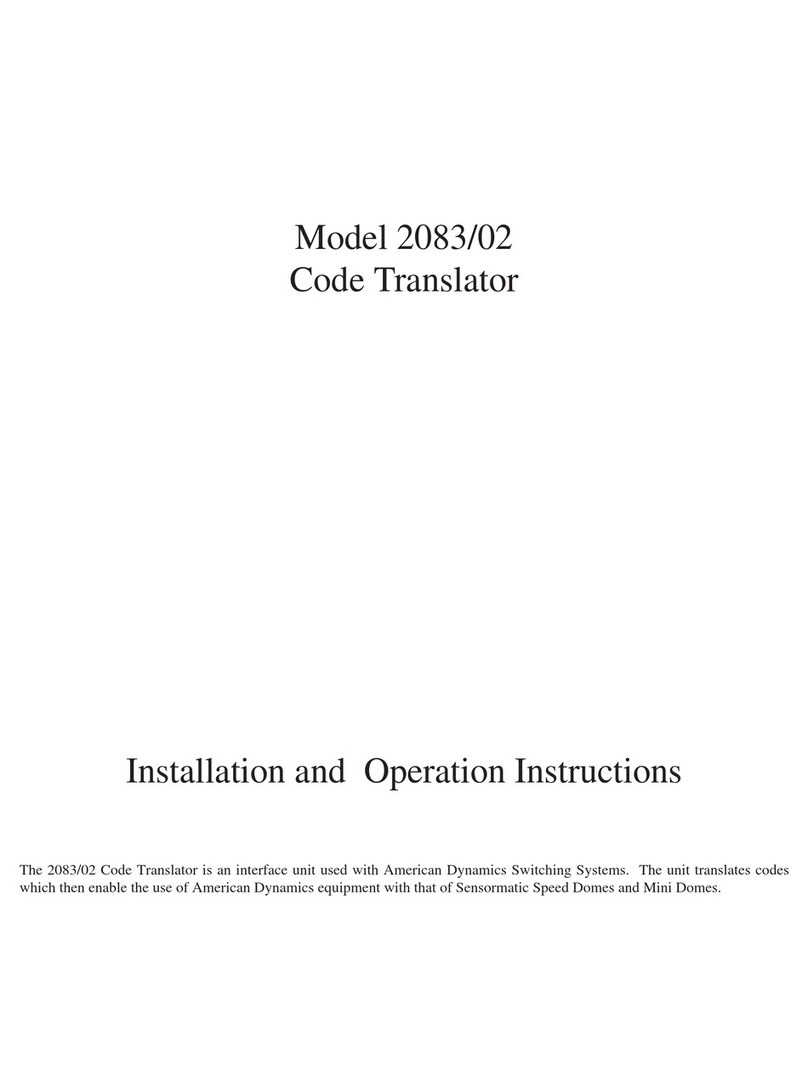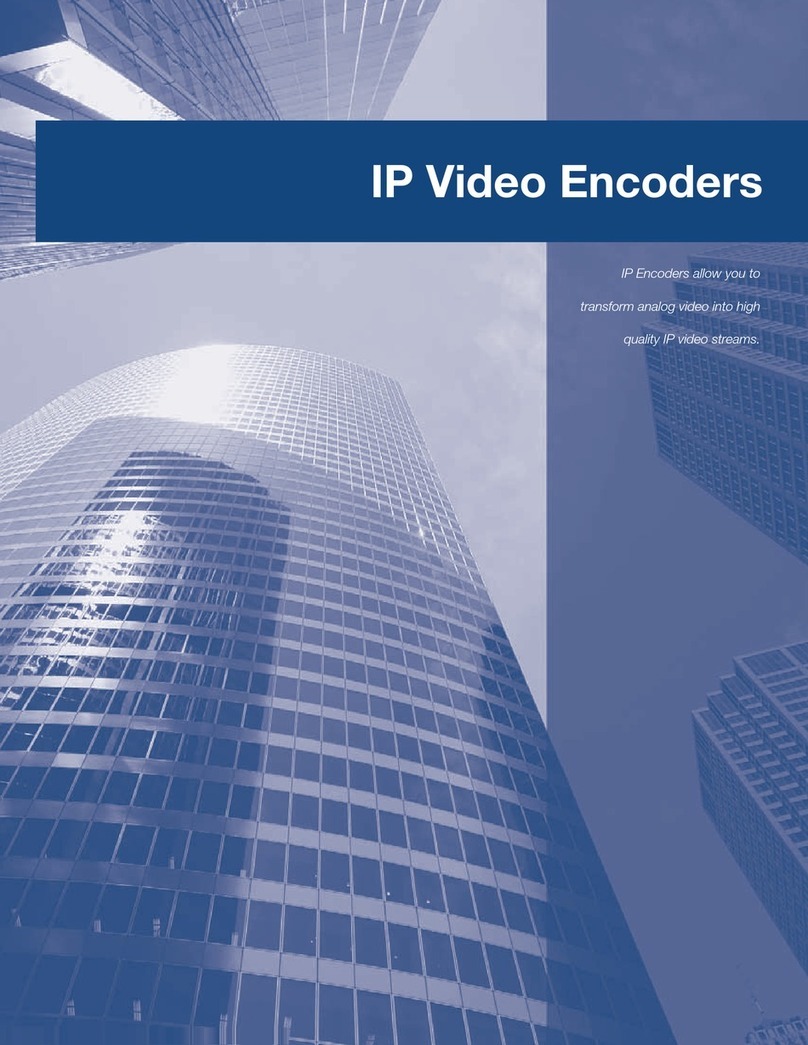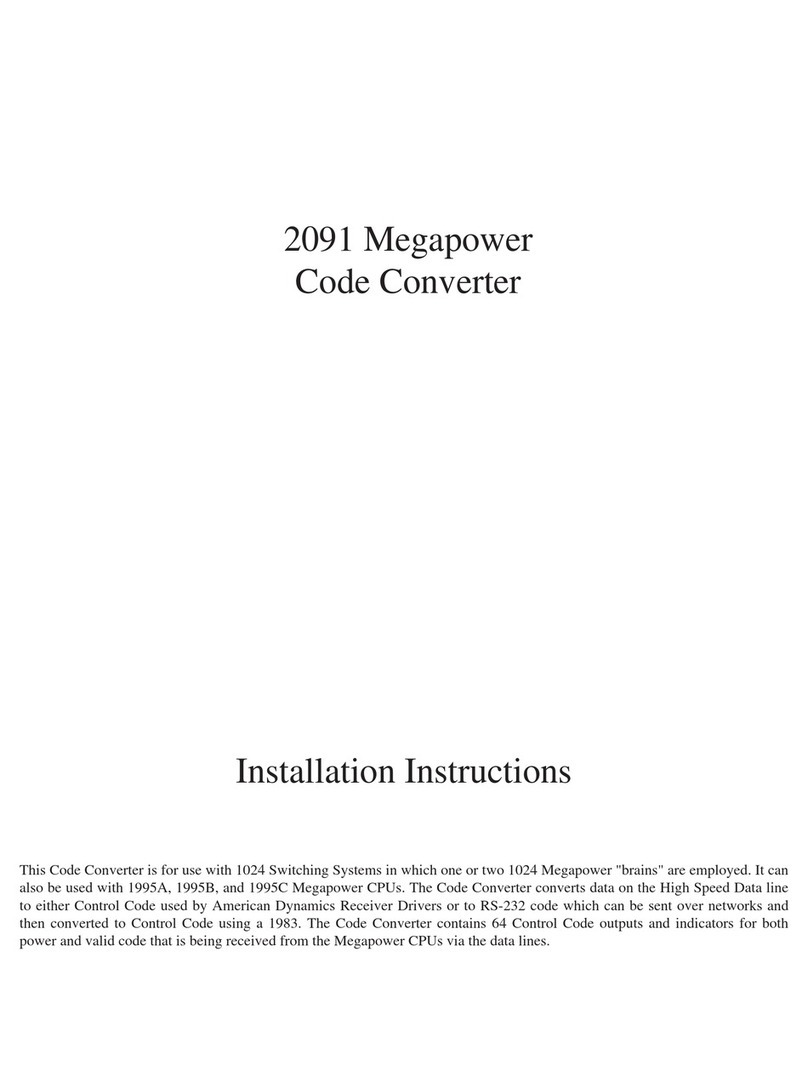
OPERATION
Start
-
This is a 10-position
rotary
switch. Positions one through
eight are used to select the starting camera number of the group
of
eight cameras that the code converter is
to
be used for. The
remaining
two
positions of the rotary are
not
used. The setting of
this switch in conjunction with the Receiver Controlled switch
will select the cameras to be controlled.
The starting camera number selections are as follows:
POSITION
1
2
3
4
5
6
7
8
CAMERA
NUMBER
1
9
17
25
33
41
49
57
SETUP At Distant Site (at Receiver)
All
controls
for
the Code Converter
are
located on the unit's front
panel. The front panel controls determine if the unit receives
Control Code and converts it to RS-232 or receives RS-232 and
converts it to Control Code.
XMIT/REC
Switch
-
Set this switch to REC. this places the
code converter in the receive mode.
RECEIVERS CONTROLLED
Switch
at the Distant Site
-
The setting of this rotary switch
on
the code converter at the
distant site
is
irrelevant.
CAMERA
Switches at
the
Distant Site
-
The setting of these
two rotary switches
on
the code converter at the distant site is
irrelevant.
OPERATION
Power
Switch
Place the unit into operation by depressing the side of the switch,
marked "1". See the Power section
on
page 1 for further
information.
Front Panel Indicators
Four
indicator
lights on the front panels of each code converter
indicate
status
and
operation. See below.
RS-232 OUT
-
This indicator, when lit, indicates data is
being transmitted to the link by the code converter in the XMIT
mode.
Code In
-
In the XMIT mode this light indicates the
presence of proper Control Code commands from the
Switcher/Controllerinto the code converter.
In
1600,
1650,
and
1700
systems, and from a
1680MG
Generator, the Code In light glows steadily whenever proper
Control Code is present. A flickering light may
be
an indication
that
the
B
and
W
wires of the Control Code line have been
reversed.
In 1995 and 2050 systems, it glows steadily only while proper
Control Code commands are being received from the Switched
Controller.
Code Out
-
In REC mode this light indicates that the proper
Manchester Control Code commands are being sent from the
code converter
to
a Receiver. It lights each time a proper Control
Code command is sent
out.
ControlCode Transmission
When connections and setup are complete and the
communication link has been established between the code
converters,the link is ready to transmit Control Code.
To
transmit ControlCode
perform
the following steps in order:
1.
Turn
on
both converters by depressing the
"1"
side
of
the
power switcheson the left of the front panels.
2.
Move the DATA
ON/OFF
switch to
ON.
It is found
on
the
code converter
at
the Switcher/Conuoller (XMIT mode).
3.
Move the DATA
ON/OFF
Switch
to
ON,
found on the
code
converter at the distant site (REC mode). The RS 232 light will
now flash
on
both code converters when the Control Code
commands for the Receiver at the distant site are sent
from
the
Switcher/Controller.The Code-Out light on the code converter at
the distant site will flicker each time a word is sent to
a
Receiver
at
the site.
RS-232
IN
-
This indicator, when lit, indicates
data
is being
received from the link by the code converter in the
REC
mode.
3
